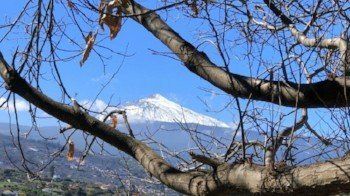VULCANOLOGICAL RISKS
There is an abundant descriptive bibliography of the risks associated with volcanic phenomena and their possible effects on both health and habitat within their areas of influence, which can be very extensive.
Volcanic phenomena can be eruptive or stay in magmatic intrusions below the earth's surface. In the latter case, although there are no air emissions of lava and ash, if there may be emissions of gases that can become life threatening, if their concentrations exceed certain limits (10% in CO2 volume for example). In 1986, more than 1,700 people died due to emanations of volcanic gases in Lake Nyos in Cameroon, without the occurrence of an eruption.
The expert vulcanologist David Rothery estimates that 33% of deaths associated with volcanic phenomena are due to events associated with pyroclastic flows, 24% to diseases caused by gas emissions, water pollution or lack of food that may be associated with These phenomena, for example, occurred in the 1991 eruption of Pinatubo in the Philippines (VEI6). A tsumanis 20% and Lahars 17%.
The pyroclastic flows associated with high explosive phonolytic type eruptions, called plinianas or sub-plinianas, can cause the displacement of rocks of considerable weight and dimensions at not insignificant distances, the volume of the emitted flows and the distance to which they are displaced will depend on the intensity of the eruption, in eruptions cataloged as VEI4 or higher these can be very important.
Another risk associated with volcanic eruptions is the emission and deposition of ashes, as well as toxic gases, the volume and distance at which the ash is deposited will depend on the type of volcanic eruption and weather conditions. It is considered that deposits greater than 10cm in thickness of ashes have a direct impact on the stability of buildings and infrastructures.
In addition to the impact on human life, it must be taken into account that air navigation can be affected in an important and immediate way by the emission of volcanic ash, and there is an observatory of the international civil aviation organization, ICAO, for the ash surveillance in the airspace, the VAACs, which monitor and regulate air navigation in volcanic ash emission zones. The VAAC of Toulouse in France corresponds to the Canary Islands. This impact on air navigation in the case of Tenerife can have a direct impact on the possible evacuation strategies and logistics supply of food and help in case of volcanic eruption, which could affect not only Tenerife but the entire Canary Islands or more extensive depending on the type of eruption and meteorology.
In the case of Tenerife, there are no foreseeable risks for Lahars, since there are no important surface water currents, although there are possible tsunamis due to earthquakes or ground displacements.





